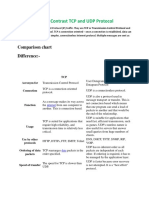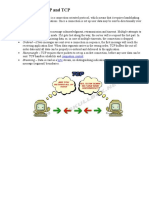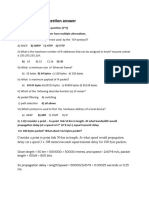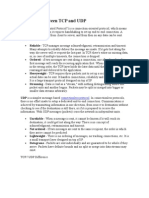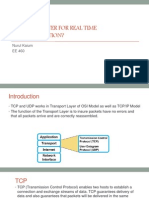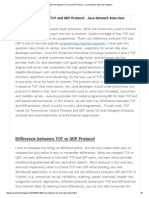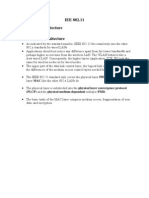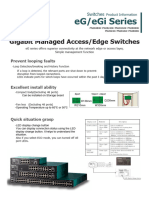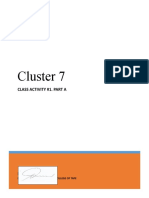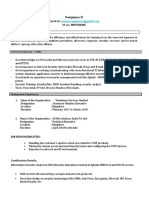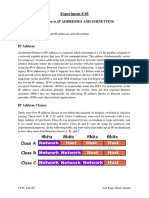0% found this document useful (0 votes)
32 views1 pageDifference Between TCP & UDP
TCP and UDP are both communication protocols used for data transmission over networks, with TCP being connection-oriented and providing error-checking and guaranteed delivery, while UDP is connectionless and does not guarantee delivery or error recovery. TCP is slower and more reliable, using sequencing and handshakes, whereas UDP is faster, has a fixed header size, and supports broadcasting. Common applications of TCP include HTTP and FTP, while UDP is used in DNS and VoIP.
Uploaded by
preranaaithal14Copyright
© © All Rights Reserved
We take content rights seriously. If you suspect this is your content, claim it here.
Available Formats
Download as PDF, TXT or read online on Scribd
0% found this document useful (0 votes)
32 views1 pageDifference Between TCP & UDP
TCP and UDP are both communication protocols used for data transmission over networks, with TCP being connection-oriented and providing error-checking and guaranteed delivery, while UDP is connectionless and does not guarantee delivery or error recovery. TCP is slower and more reliable, using sequencing and handshakes, whereas UDP is faster, has a fixed header size, and supports broadcasting. Common applications of TCP include HTTP and FTP, while UDP is used in DNS and VoIP.
Uploaded by
preranaaithal14Copyright
© © All Rights Reserved
We take content rights seriously. If you suspect this is your content, claim it here.
Available Formats
Download as PDF, TXT or read online on Scribd
/ 1
